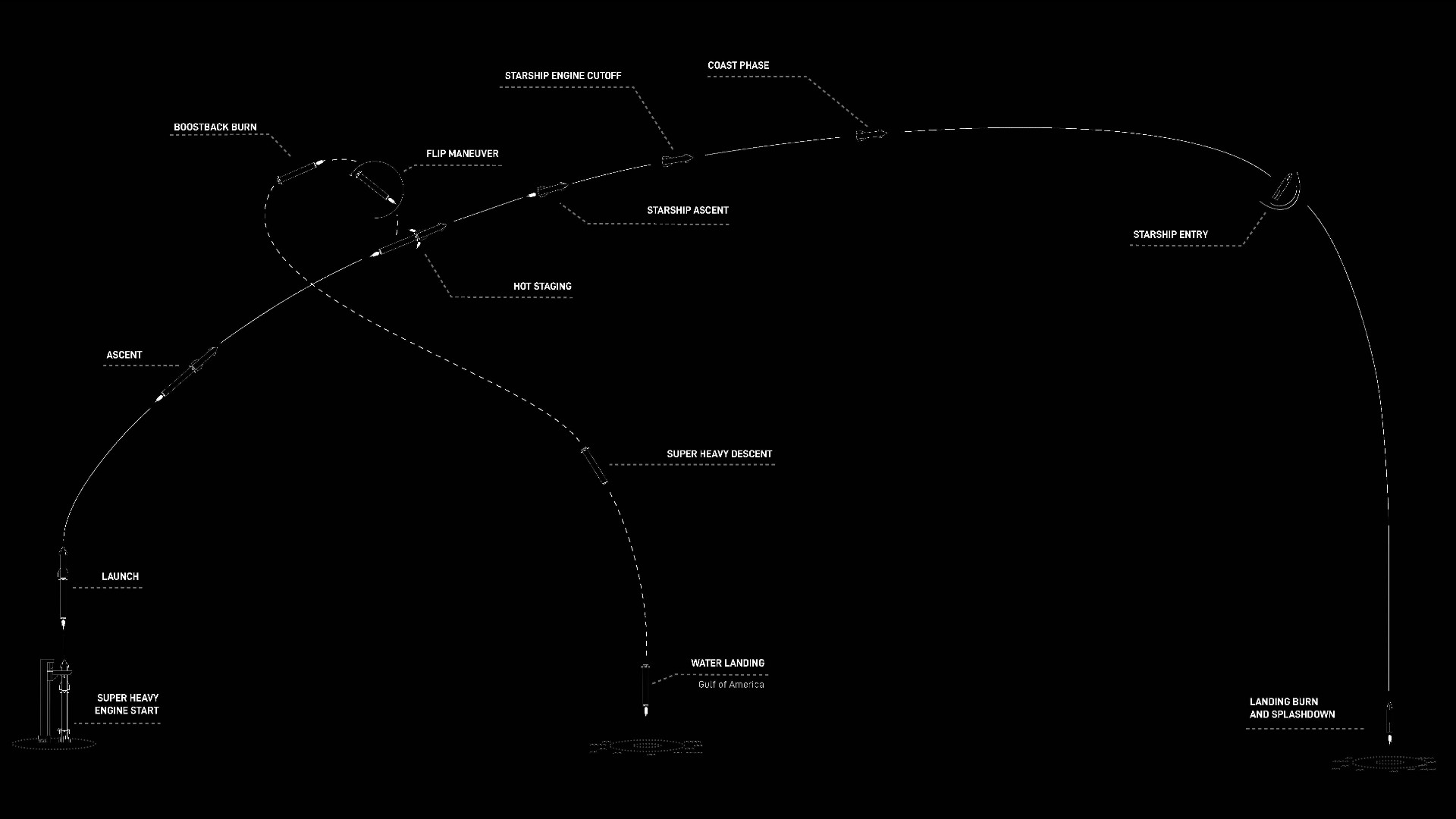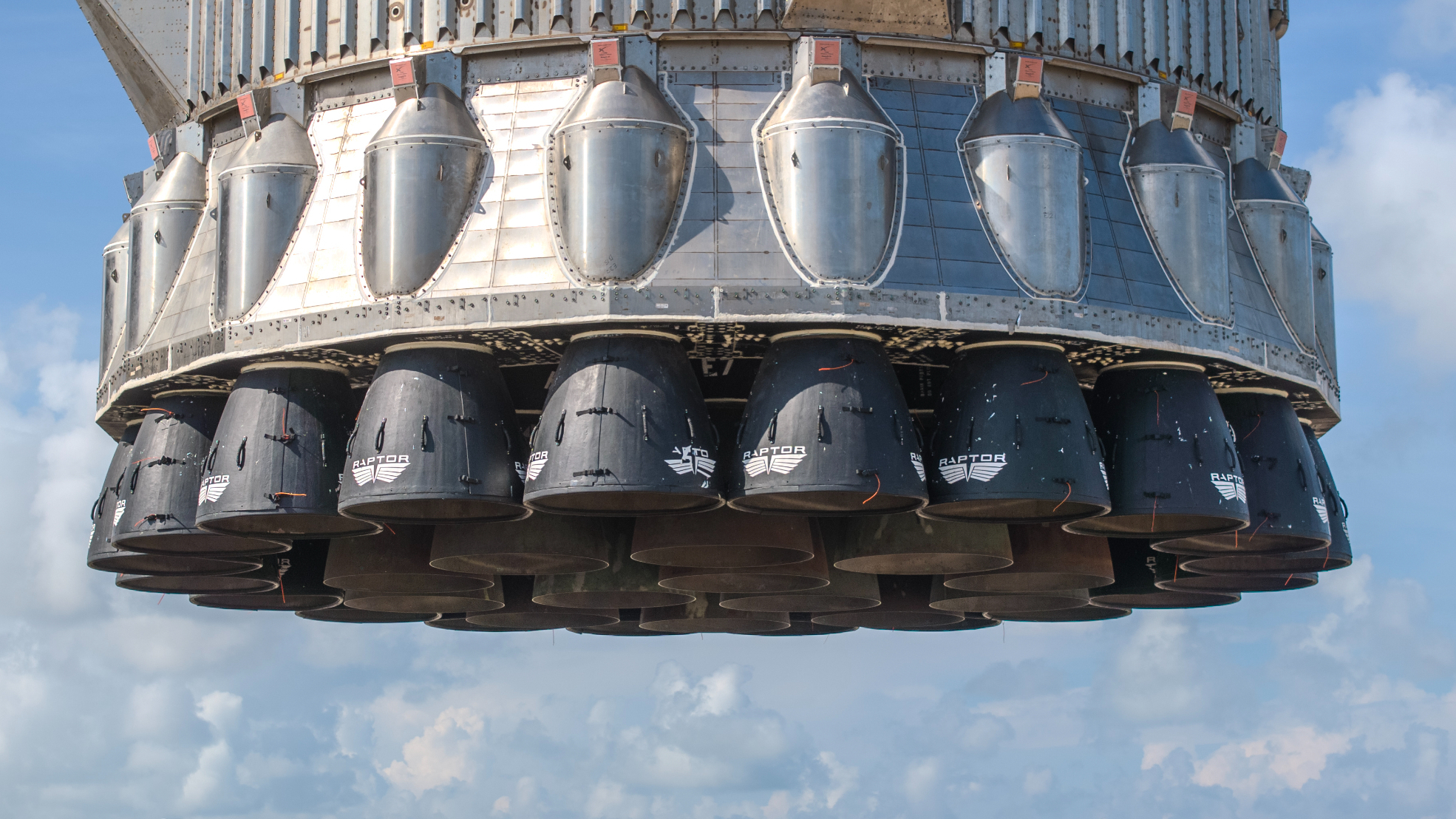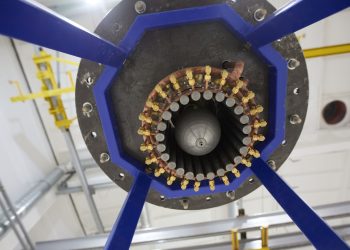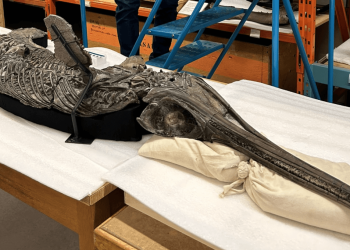SpaceX plans to launch the 11th test flight of its Starship megarocket Monday evening (October 13), and we have the information you need to tune in live.
THE Spacecraft Flight 11 test launch is scheduled from SpaceX’s Starbase site in South Texas on Monday (October 13)during a 75-minute window that opens at 7:15 p.m. EDT (11:15 p.m. GMT; 6:15 p.m. Texas local time). You can follow the takeoff live on this page, courtesy of EspaceX. You can visit our Starship Flight 11 Live Updates page for the latest information.
Flight 11 will be Starship’s fifth launch in 2025. SpaceX hopes to build on the success of Flight 10, which launched on August 26 and achieved all its main objectives. (Vol 7, Vol 8 And Flight 9which were also launched this year, were more contrasting; SpaceX prematurely lost the Starship upper stage on all of them.) SpaceX intends to settle March using Starship, and NASA used the vehicle as the first crewed lander for its Artemis Program of the exploration of the Moon. But the 400-foot-tall (121-meter-tall) Starship — the largest and most powerful rocket ever built — is still in the testing phase, and the company hopes Monday’s action will bring it closer to the finish line.
What time is SpaceX’s Starship Flight 11 launching?
SpaceX targets Monday (October 13)for the launch of Starship Flight 11, whose takeoff is scheduled for 7:15 p.m. EDT (11:15 p.m. GMT). SpaceX has a 75-minute launch window, however, so Starship can fly anytime between 7:15 p.m. and 8:30 p.m. EDT (11:15 p.m. to 12:30 a.m. GMT).
Based on local road closure alerts around Starbase, SpaceX has saved the launch dates for Flight 11 on Tuesday (October 14) And Wednesday (October 15)if Starship can’t take off on Monday.
Related: Read our SpaceX Guide to Space and Super Heavy Ships for a detailed overview
Can I watch SpaceX’s Starship Flight 11 launch?
You can watch SpaceX’s Starship Flight 11 test launch in several ways.
SpaceX will broadcast the liftoff live via its accountas well as on his Starship Flight 11 mission page and the X TV application. Coverage will begin approximately 30 minutes before launch – so, at 6:45 p.m. EDT (10:45 p.m. GMT)if SpaceX continues to target the start of the launch window on Monday.
Space.com will simulcast the SpaceX Flight 11 stream on this page, as well as on our home page. and our YouTube channel.
If you want a longer live stream, you can check out the NASASpaceflight webcast on YouTube. This flow will begin around 4:15 p.m. EDT (2015 GMT) and provide live feedback during “Go for Launch” surveys and other key preflight activities.
Look on it
Finally, if you’re in the area, you can witness SpaceX’s Starship Flight 11 in person. SpaceX doesn’t have an official launch viewing site for the public or media, but you can find a spot yourself.
A good option is the Cameron County Amphitheater in Isla Blanca Park on South Padre Island, which offers a clear view of the Starbase Orbital Launch Mount from across the water. You can also stake out a spot along the shoreline of nearby Port Isabel.
Traffic in the area tends to get very heavy closer to a Starship launch, so plan to get to your favorite viewing site early, several hours early, if possible.
How long is SpaceX spacecraft flight 11?

If all goes as planned, Starship Flight 11 will last just over an hour. The mission will be broadly similar to Flight 10, with sea landings planned for both Starship stages – the Super Heavy booster and the Starship upper stage (or “Ship” for short). (There will not be capture “chopsticks” of Super Heavy by the Starbase launch tower this time.)
“The upcoming flight will build on the successful demonstrations of Starship’s 10th flight test with flight experiments collecting data for the next-generation Super Heavy booster, testing Starship’s heat shield, and demonstrating maneuvers that will mimic final upper stage approach for future return to the launch site,” SpaceX wrote. in a mission overview.
Flight 11 Super Heavy already has one launch under its belt: it flew Flight 8 on March 6, capping its work that day with a successful return to Starbase for a wand capture. According to SpaceX, twenty-four of its 33 Raptor engines are veterans of this previous mission.
The main goal of Super Heavy this time is to test a new landing and landing strategy for the next-generation Starship, a larger vehicle expected to debut early next year. (Flight 11 will be the final launch of the current “Version 2” iteration of Starship.)
“Super Heavy will fire 13 engines at the start of the landing phase, then switch to a new configuration with five engines running for the diversion phase,” SpaceX wrote in the mission description.
“Previously carried out with three engines, the planned baseline for the V3 Super Heavy will use five engines during the combustion section responsible for refining the booster trajectory, adding additional redundancy for spontaneous engine shutdowns,” the company added. “The booster will then switch to its three central engines for the completion of the landing, entering a hover while still above the ocean surface, followed by a shutdown and drop into the Gulf of America.”
TIME (Hr:Min:Sec) | EVENT | Header cell – Column 2 |
|---|---|---|
T-1:15:00 | Flight director asks for refueling | Line 0 – Cell 2 |
T-0:53:00 | Start of loading liquid methane by ship | Line 1 – Cell 2 |
T-0:46:10 | Loading of liquid oxygen onto the ship begins | Line 2 – Cell 2 |
T-0:41:15 | Super heavy liquid methane loading begins | Line 3 – Cell 2 |
T-0:35:52 | Super heavy liquid oxygen loading begins | Line 4 – Cell 2 |
T-00:19:40 | Raptor engine cooling begins on Ship and Super Heavy | Row 5 – Cell 2 |
T-00:3:20 | Ship refueling completed | Row 6 – Cell 2 |
T-00:2:50 | Super Heavy refueling completed | Line 7 – Cell 2 |
T-00:0:30 | Flight Director GO for launch survey | Row 8 – Cell 2 |
T-00:00:10 | Flame deflector activation | Line 9 – Cell 2 |
T-00:00:03 | Starting the Raptor Ignition Sequence | Row 10 – Cell 2 |
T-00:00:00 | Liftoff (“Excitement guaranteed,” says SpaceX) | Row 11 – Cell 2 |
TIME (Hr:Min:Sec) | FLIGHT EVENT | Header cell – Column 2 |
|---|---|---|
T+00:02 | Takeoff | Line 0 – Cell 2 |
T+01:02 | Ship/Super Heavy Range “Max Q” | Line 1 – Cell 2 |
T+02:37 | Super Heavy Main Engine Shutdown | Line 2 – Cell 2 |
T+02:39 | Ship Raptor Engine Hot Separation/Ignition | Line 3 – Cell 2 |
T+02:49 | Starting super heavy boostback burning | Line 4 – Cell 2 |
T+03:38 | Super Intense Combustion Engine Shutdown | Row 5 – Cell 2 |
T+03:40 | Hot stage drop | Row 6 – Cell 2 |
T+06:20 | Start burn on super heavy landing | Line 7 – Cell 2 |
T+06:36 | Super Heavy Landing Burn Stop (Followed by Landing) | Row 8 – Cell 2 |
T+08:58 | Spaceship engine cut-out | Line 9 – Cell 2 |
T+00:18:28 | Payload Deployment Demo Starts | Row 10 – Cell 2 |
T+00:25:33 | Payload Deployment Demo Completed | Row 11 – Cell 2 |
T+00:37:49 | Demonstration of relighting ship engines | Row 12 – Cell 2 |
T+00:47:43 | Return of the ship | Row 13 – Cell 2 |
T+01:03:30 | Transonic ship | Row 14 – Cell 2 |
T+1:03:52 | The ship is subsonic | Row 15 – Cell 2 |
T+1:05:58 | Start burn on landing | Row 16 – Cell 2 |
T+1:06:00 | Landing Flip | Row 17 – Cell 2 |
T+1:06:09 | The landing burns three to two engines | Row 18 – Cell 2 |
T+1:06:25 | “An exciting landing!” SpaceX says. | Row 19 – Cell 2 |
The craft will fly much farther and longer than the Super Heavy on Flight 11. As on Flight 10, the upper stage will deploy eight payloads (dummy versions of SpaceX’s spacecraft). Star link broadband satellites) in suborbital space. This step is expected to take place over a seven-minute period beginning 18.5 minutes after takeoff.
The ship will also briefly relight one of its six Raptor engines into space just under 38 minutes into the flight, demonstrating a key capability for a vehicle designed to travel to the moon and Mars.
Additionally, Flight 11 will put the ship’s heat shield and other re-entry systems to the test, collecting data to pave the way for “rod” captures of the upper stage later.
“For re-entry, tiles were removed from Starship to intentionally test vulnerable areas of the vehicle,” SpaceX wrote in the mission description. “Several of the missing tiles are in areas where the tiles are vehicle-bound and do not have a backup ablative layer. To mimic the path a ship will take on future flights back to Starbase, the final phase of the Starship’s trajectory on Flight 11 includes a dynamic tilt maneuver and will test subsonic guidance algorithms before a landing and ditching in the Indian Ocean. “
The ship should return Earth’s atmosphere just under 48 minutes after launch and hit the water off the coast of Western Australia approximately 18 minutes later.
What if Starship Flight 11 can’t start?

SpaceX currently has two official backup days for Flight 11, contingent on a beach and road closure. notice issued by Cameron County of Texas – Tuesday (October 14) And Wednesday (October 15).
The launch windows are likely the same Tuesday and Wednesday, although we will have to wait for confirmation from SpaceX on this.









